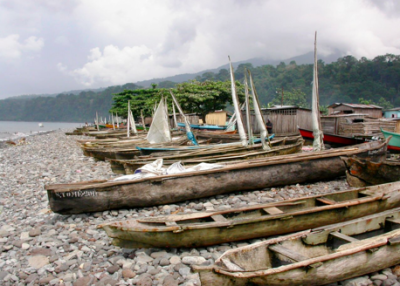
The small archipelago state of São Tomé and Príncipe (STP) is particularly vulnerable to climate-related hazards such as floods, coastal/river mouth flash floods, storms and drought episodes, and their impacts on sectors such as agriculture, fisheries, as well as infrastructures (mostly located in the coastal zone). Nearly 20 percent of the nation’s workforce is employed in artisanal fisheries (about 2,000 people directly and an additional 18,000 indirectly), the majority of the villagers are small-scale farmers, fishermen or related to fishing activity.
Historically established in the vicinities of flood-prone river deltas, the communities of Neves, Ribeira Afonso, Malanza, Santa Catarina and Sundy (in Principe Island) have been considered as the most vulnerable locations in the country. All these coastal sites share a common feature of recurrent climate related hazard of overlapping storm surges and torrential rains and community livelihoods based on artisanal fishing and small scale agriculture. The resilience of these communities has been further undermined by past unsustainable sand extraction practices and increasingly weakened by stronger and overlapping coastal storms and torrential rains. The confluence of such hazards in 2008-2010 has resulted in widespread flooding across all communities. Houses remain the most affected assets. The most common reported impacts are illnesses, temporary evacuation or abandonment of houses, and livelihood losses (due to work interruptions and losses of crops). Reported deaths are mostly of fishers perished at sea.
For full report, please click download below:
